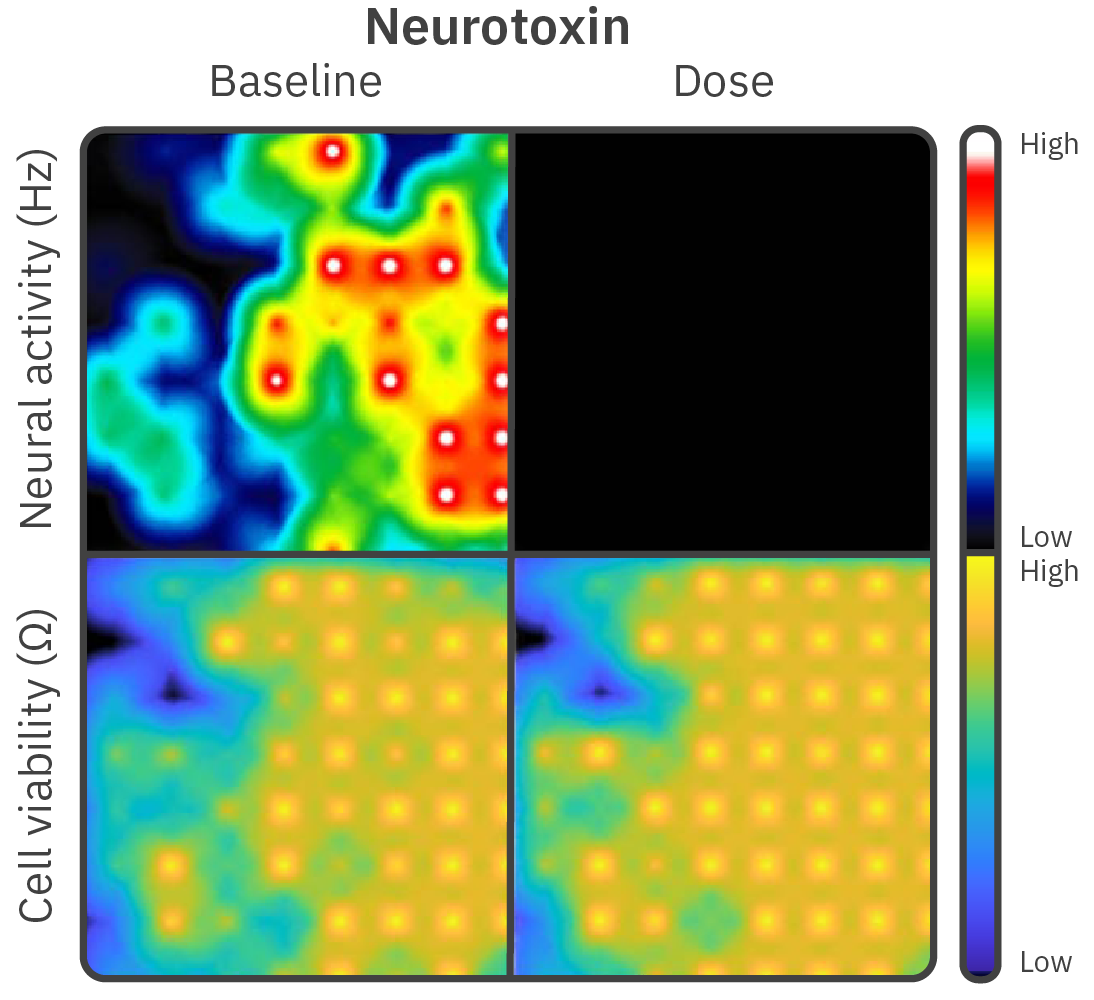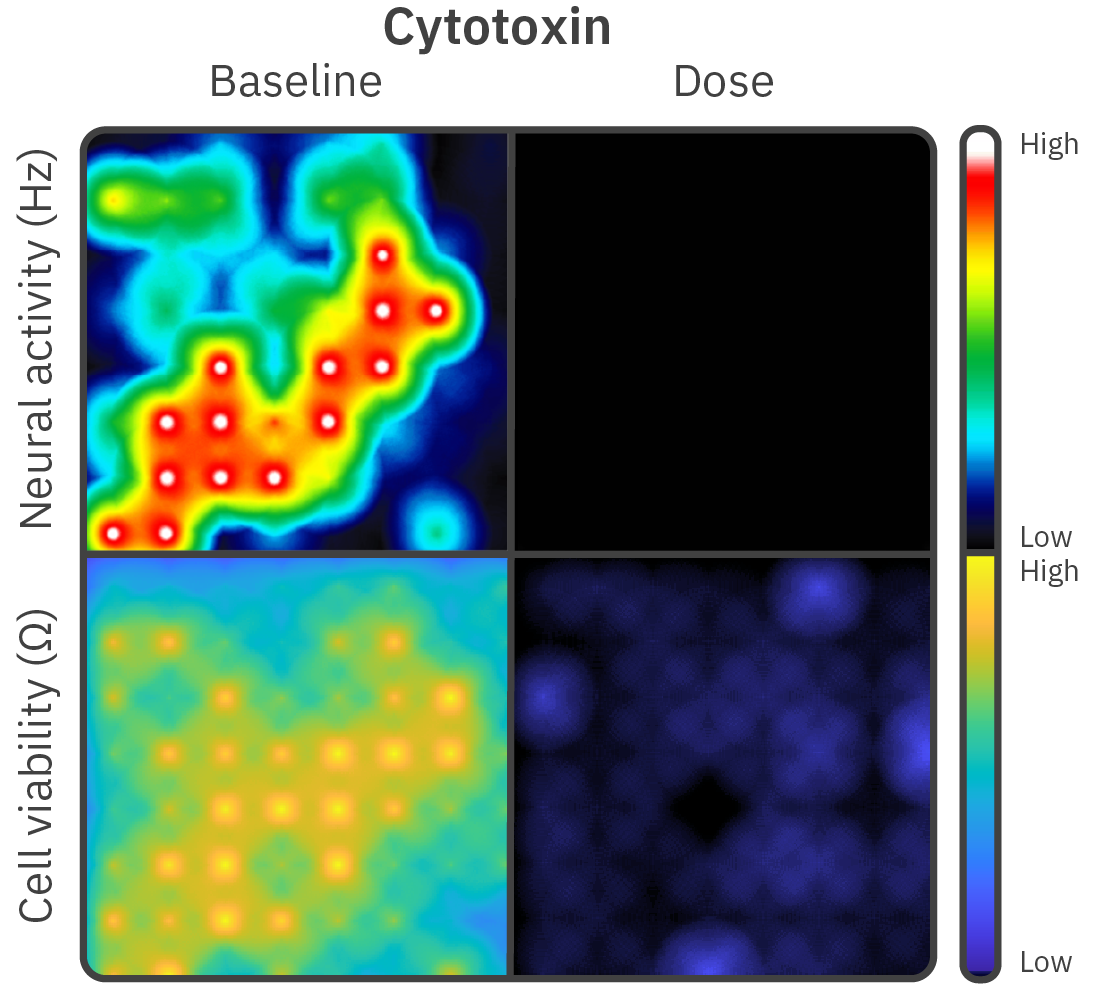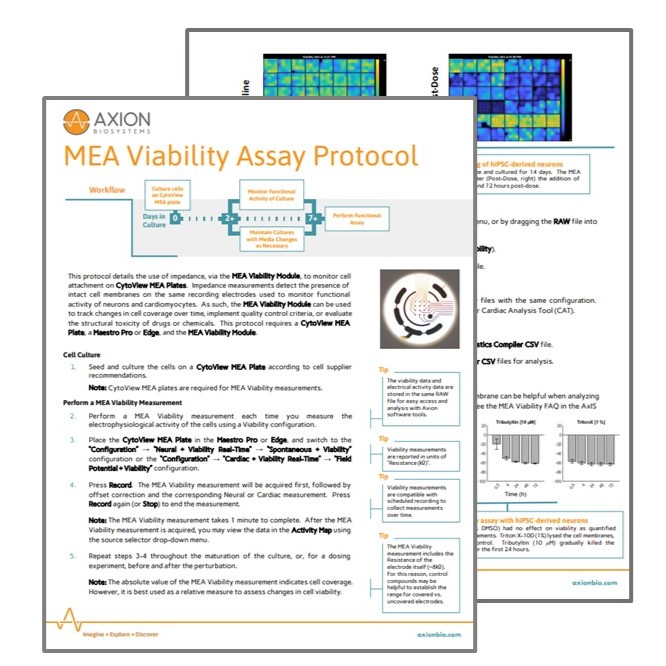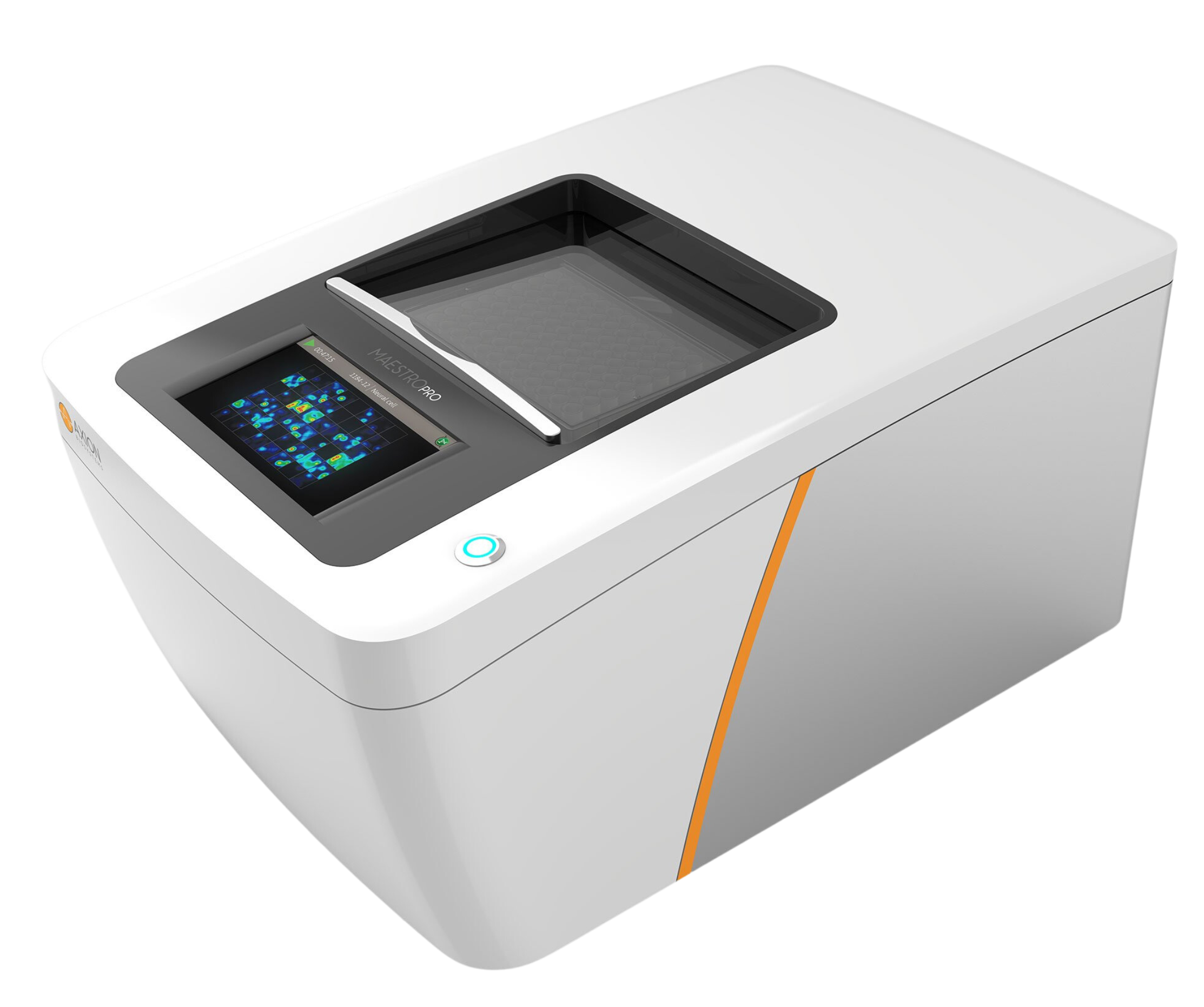
MEA Viability Module
Get more from every electrode. The MEA Viability Module adds multimodal impedance capability to your Maestro MEA experiments, delivering both functional and morphological data from the same plate. This powerful, noninvasive tool helps you determine whether changes in activity are due to functional disruption, cytotoxicity, or culture quality—critical knowledge for drug development, safety screening, and in vitro model optimization.
Key Features
Compatible with
"Are my cells healthy, functional, and ready to assay?"
Whether you’re screening compounds or validating iPSC-derived neural models, knowing the answer to this question before you begin is critical. The MEA Viability Module tells you instantly—streamlining workflows and accelerating data-driven decisions.
Go beyond activity alone
Unlock richer insights without changing your workflow. The MEA Viability Module adds value to every well by combining electrophysiology and impedance in a single, label-free assay. This multimodal approach gives you clearer answers—faster.
Applications:
- >> Verify even coverage and good attachment to ensure quality recordings
- >> Identify and exclude poor-quality wells automatically
- >> Distinguish functional toxicity from cytotoxicity
- >> Track acute and chronic cell killing
Whether you're screening compounds or validating cell models, the MEA Viability Module helps you ask better questions—and get more confident answers.

Overview
Reveal the mechanism behind the signal
Functional toxins disrupt activity; cytotoxins impact cell health—both can silence cell function. The MEA Viability Module helps you distinguish between the two by measuring both electrophysiology and viability from the same microelectrodes in one easy multiplexed assay.


By combining functional and viability data in a single, noninvasive assay, the MEA Viability Module reduces the need for separate tests — simplifying your process and delivering clearer results.
Getting started: MEA Viability assay protocol

The MEA Viability Assay Protocol provides step-by-step guidance for measuring both cell health and electrophysiological activity from the same MEA well.
What you’ll learn:
- >> How to configure and run simultaneous viability and activity recordings on Maestro systems
- >> How to generate and interpret impedance-based resistance maps for cell coverage
- >> Best practices for using viability data to improve assay consistency and quality control
Ready to get more from every assay?
Maestro MEA is your all-in-one platform for multimodal in vitro analysis—combining high-quality electrophysiology with impedance-based measurements in a single system. Maestro MEA delivers the insight you need to accelerate discovery and ensure assay quality.
